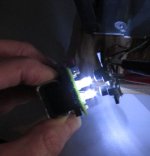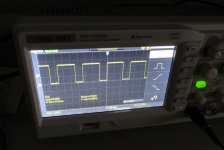clh333
Veteran Member
Model 850 Shugart manual states termination is required "for the seven input lines that are to be multiplexed" and that "In order for the drive to function properly, the last drive on the interface must have these seven lines terminated." The drive in question, a Model 850, had its factory-supplied seven-line resistor, at E5 on the board grid, and "termination present" jumper next to it both removed / missing when acquired.
Termination is specified as 150 Ohm; the closest I can come is a 16-pin Beckman 180 Ohm which has 8 pairs of opposing pins each comprising one resistor. I could stick the Beckman in the E5 socket and bend two legs upward, but I know there is more than one style of resistor array and don't know if this applicable here. I also don't have a schematic.
So the questions are: Can I get away with this, and is termination still required if there is only one drive, i.e. there is no multiplexing of signals?
Thanks for the replies.
-CH-
Termination is specified as 150 Ohm; the closest I can come is a 16-pin Beckman 180 Ohm which has 8 pairs of opposing pins each comprising one resistor. I could stick the Beckman in the E5 socket and bend two legs upward, but I know there is more than one style of resistor array and don't know if this applicable here. I also don't have a schematic.
So the questions are: Can I get away with this, and is termination still required if there is only one drive, i.e. there is no multiplexing of signals?
Thanks for the replies.
-CH-


